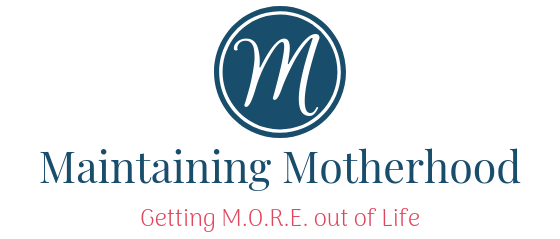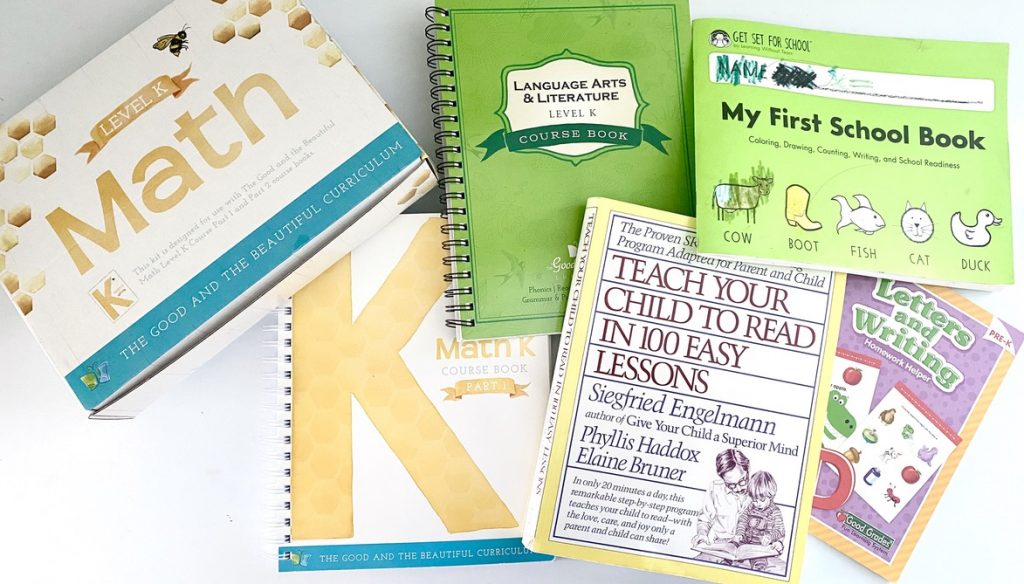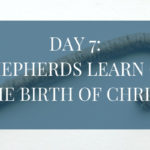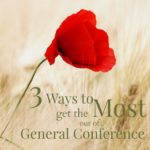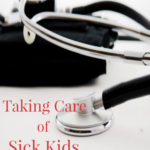Wondering how to homeschool for Pre-K and Kindergarten? Here are some tips, tricks, and favorites for preschool and kindergarten homeschool!
As a homeschool mom of 6 (soon to be 7 kids), I love to look at the curriculum choices of other homeschoolers. It is fun to see the books they have chose to read for their readalouds, core subjects, and elective courses. Hopefully by showing you what we are using this year, it can help you make choices in your own homeschool! Keep reading to find out what we are using for Preschool and Kindergarten homeschool for the year 2020!
(This post contains affiliate links)
As a disclaimer, I would just remind you that every child is different. Every child learns at their own pace and has their own set of gifts and talents. Please don’t judge the success of your child off of another homeschooler’s progress. In any learning environment there are kids that are better at some subjects than others. This could be because of exposure, a natural ability for learning certain subjects, or that they have a greater interest in certain subjects. The curriculum choices that I will be sharing are specific to our homeschool, and our children based on their needs and abilities! The main purpose in me writing this is to help you more fully choose a homeschool curriculum that works for you and your family!
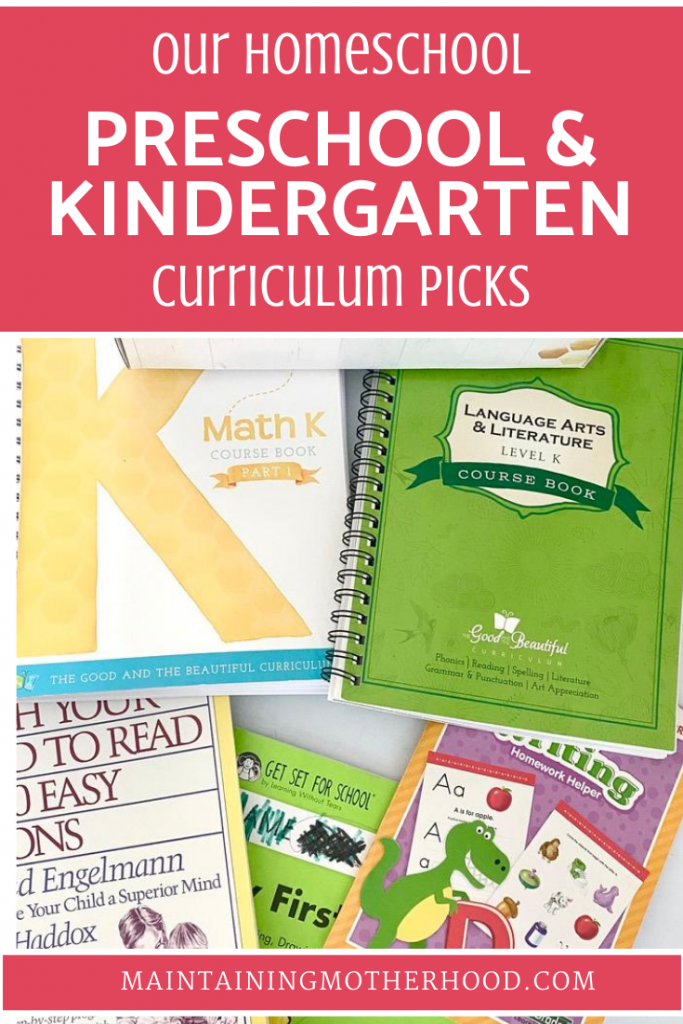
What is my Focus?
Before you embark on your journey to homeschooling a Preschool or Kindergarten age child, remember that your main focus during this time should be to help them love learning. If they learn nothing else in these two years, simply developing a joy in discovery is enough! If you focus too much on completing a workbook, or teaching them to read and write, you could be setting yourself up for a tension-filled season of life. Instead, go on nature walks, explore the world around you, visit museums, have fun with coloring and playdough, read stories and visit the library. Low-key activities that still definitely teach your children will bring far better results than being frustrated that your child can’t complete their workbook. Developing a curriculum of play is far more important than a rote preschool or kindergarten curriculum!
Reading
In both Preschool and Kindergarten homeschool, I feel like a huge focus should be on developing a love of literature. Focus on raising readers! If your child can learn to read, they can learn anything. The world is at their fingertips! Start with story time at the library. Have a designated time in your schedule where you read stories. We read scriptures every morning as a family, stories to our nappers before nap, and a read aloud to everyone at bedtime. Be willing to read a favorite story again, and again, and again until you and your child both have the story memorized and your child is proudly convinced they are reading!
If you are wanting a preschool program that will teach your child to read, we have used Waterford UPSTART for all of our kids. It is a free online preschool that they do for 15 minutes a day, 5 days a week. By using this program, all of my children have learned to read fluently before they entered kindergarten! I would highly recommend seeing if this program is available in your area. If you are wanting a program or curriculum to use to teach your child to read, we have also used the book Teach Your Child to Read in 100 Easy Lessons coupled with the simple Scholastic Beginning Readers to teach simple reading lessons to the kids.
Remember too that Reading is more than just reading the words in a book. It can involve letter recognition with letter magnets, forming letter with play dough, coloring all the letter “t’s” on a page torn out of a magazine. There are endless activities that you can do to simply bring awareness to the letters and words all around them in the world.
If you are looking for a great Language Arts curriculum, we use The Good and the Beautiful Language Arts Level K with our Kindergartener. They also have a Pre-K and Level K Primer that are available. I haven’t personally used those levels, but I have loved nearly everything that I have used from The Good and the Beautiful, so I’m sure it’s great! Level K includes some fun little crafts, simple reading and writing exercises, spelling, and introduces geography and art appreciation.
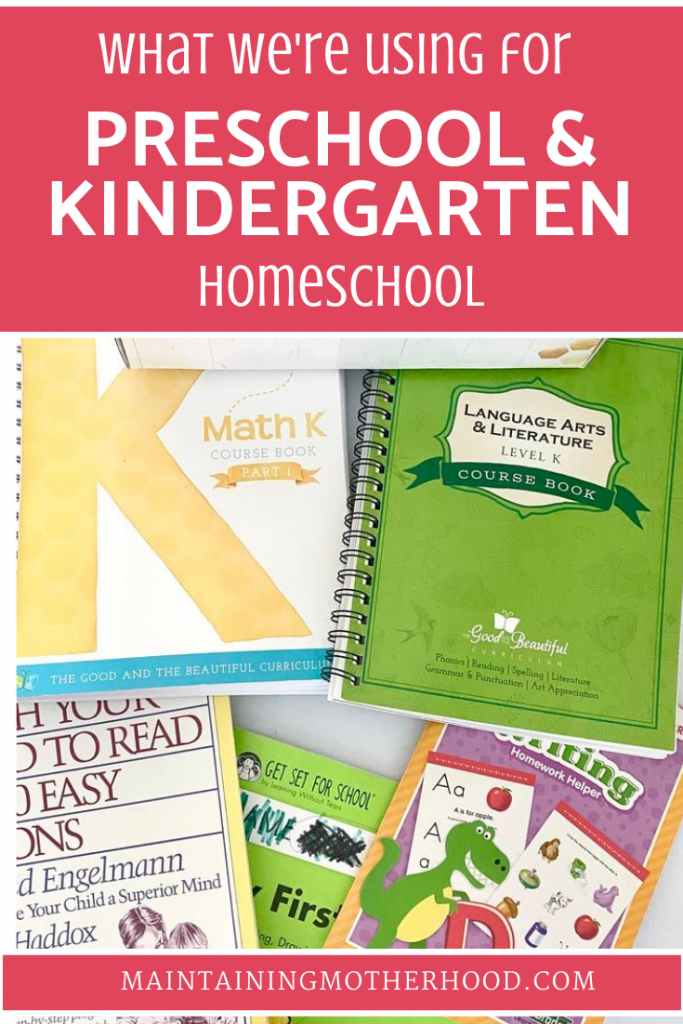
Handwriting
Learning to write can be a very frustrating task both for the teacher and the student! There are so many fun activities that you can do to encourage handwriting skills! Before focusing on learning the letters, start with shapes and holding a pencil. Coloring in coloring books, finger painting, painting with water on a piece of construction papers, writing with dry erase markers on a window, etc. All of these activities help the child explore writing and holding a writing utensil.
One of the best motivators for us with handwriting has been to write letters to extended family and send the letters in the mail. Everyone loves to get mail, and to have the kids get that simple reward of sending something, even if it is just scribbles with your written interpretation included, helps the child to make the connection necessary with writing.
When you feel that your child is read to learn to write the actual alphabet letters, we have loved using the Handwriting without Tears workbooks. They start very simply with lots of coloring pages, and go all the way through 6th Grade teaching cursive and even offering books that include some creative writing assignments.
Math
Math is so much more than just addition and subtraction! It includes number recognition, shapes, patterns, etc. Some of our favorite ways to learn math is through games. Yes, even the dreaded game of Candy Land teaches both color recognition, moving to the next colored block, and sometimes even counting to two! Some of our favorite games to play are Uno (teaching number and color matching as well as counting to 4), Qwirkle (patterns, shapes, and colors), and Tenzi (dice numbers, matching).
Simple things such as having your child count how many crackers they have, how many stairs they are climbing, doing a countdown from 10 before they ‘blast off’, sorting legos by color, etc. There are so many ways to enjoy math that doesn’t include filling out a worksheet or memorizing math facts!
If you do want a full curriculum to use for Math, we use The Good and the Beautiful Math Level K. This level includes a box full of manipulatives to use with the lessons. The textbook/workbook is full color and fun! There are games, tangrams, wooden blocks to count and sort, and so much more! I have written a whole review on the Level 1 Math, if you want to check that out and see the quality of the product you would be getting. We absolutely love the simple and fun way that this curriculum teaches math!
Other Resources
If you do want more workbook-type resources to use in your homeschool, we purchase most of our workbooks for Preschool and Kindergarten at the Dollar Store. Right about the time that school is just starting up, you can find so many different types of workbooks. They vary in their quality, but we purchase the majority of ours here for just a dollar a piece. If your child isn’t writing yet, choose simple books that only require tracing a shape or coloring in a page a certain color. You could also have your child fill that colored page with stickers of the same color, or choose many different art mediums like crayons, colored pencils, or markers to color the page in! When I am out at the thrift stores, I will also check to see if they have workbooks with only a page or two colored in for just $1. You’d be surprised what you can find!
That wraps up our Preschool and Kindergarten homeschool curriculum choices for 2020! We try to keep things fairly simple around here. The biggest thing that we focus on in our homeschool is developing life-long learners with a love for learning (how’s that for a tongue twister?). My biggest advice to you when planning your homeschool year? Keep it simple with the basics of reading, writing, and arithmetic, and let your children help you figure out the rest based on their talents and interests!
